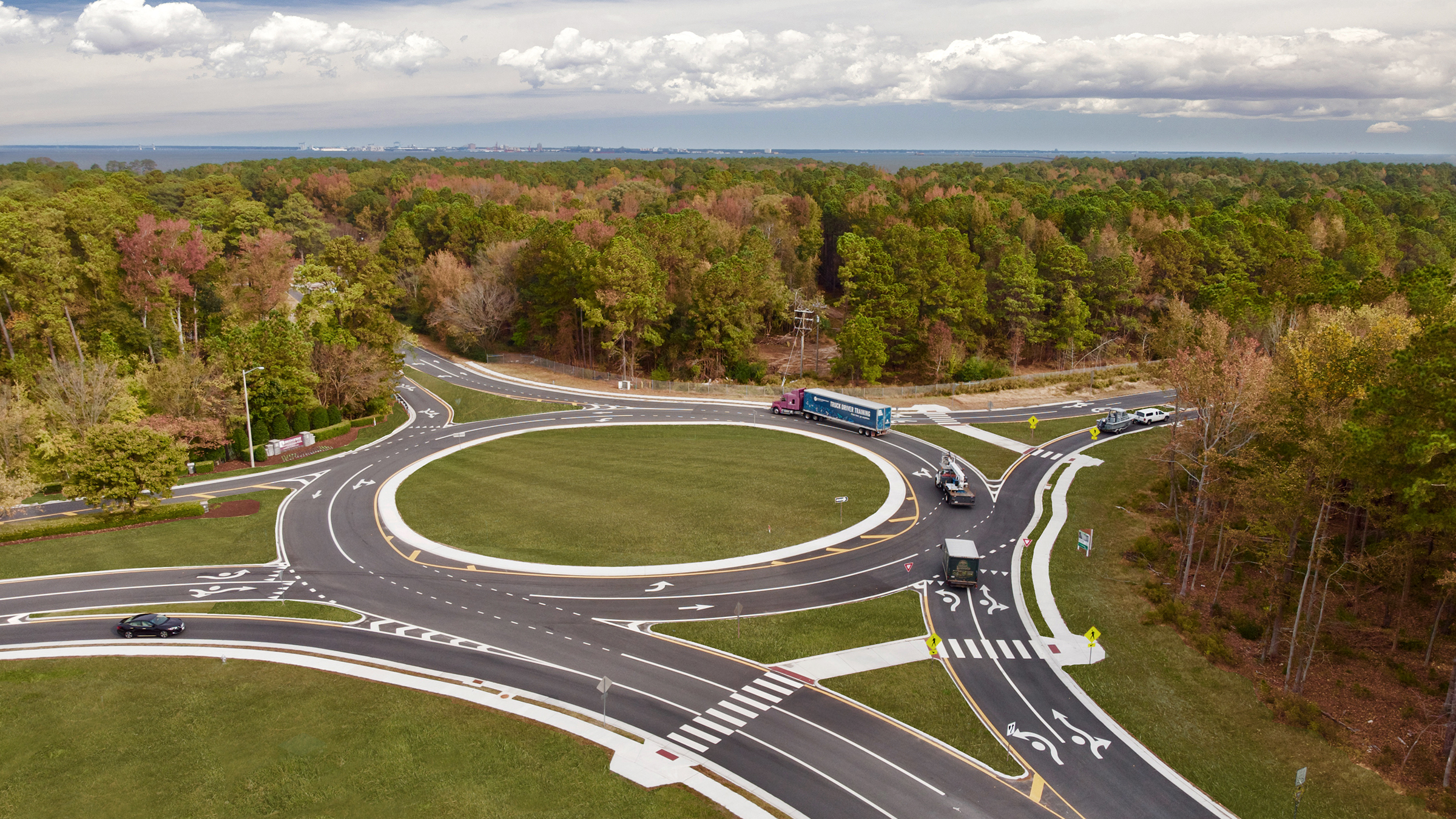Transportation Design: Top Tips for Identifying & Pursuing Grant Funding

While it is evident that urban and rural transportation systems throughout the country are in dire need of enhancement and rehabilitation, for many localities, these efforts boil down to a single factor: funding.
w
As our communities continue to grow, our transportation and shifting networks require attention and improvement to better suit changing infrastructure needs. In urban areas especially, population trends suggest the additional need to accommodate mobility through alternative forms of transportation such as biking, walking, and public transit. As shifting requires security and responsibility, it is crucial to give them attention.
As a result, more municipalities are relying on grant opportunities to address their roads, bridges, and multimodal facilities. We understand that identifying and pursuing the available grant and alternative funding sources can be complex and time consuming. Based on our experiences working with our clients to seek out and pursue these sources, our transportation team has compiled the following tips for municipal clients considering grant funding for transportation projects:
1. Identify the right grant opportunity
When identifying which grants to apply for, it is important to first ensure you’re eligible, as each specific grant has different themes, requirements, and parameters. Consider the “strings attached” to each grant – what is realistic and manageable for the project and locality, and subsequently the specifications that come with being awarded the grant. For example, federal grants may require compliance with NEPA (the National Environmental Policy Act), which can be both extensive and time-consuming. Being aware of these initial constraints and realities before beginning the application process will aid in finding a grant that is in line with the project as well as its scheduling and logistics.
The successful pursuit of grant funding requires a certain amount of gamesmanship. Understanding the challenges, variables, and what elements work most strongly in your favor is key to being awarded funding.
2. Pay attention to timelines
While being awarded grant money for a project is advantageous, an ambiguous project timeline could end up creating more of a headache than it’s worth. The schedule of the project and the award may be years apart – for example, the funding might be programmed five years in the future, and it may even have a set time period to spend it within. Your project schedule and cost estimate need to take into consideration these parameters. Additionally, each grant may have certain milestones that your project will need to meet – this is one reason that projects already in design and potentially “shovel ready” can score higher than those in pre-design. In some cases, however, a locality might need the grant to even start the design process. Timing is everything with grant funding, so attention to scheduling and details is critical.
3. Focus on your audience
Being selected for a monetary award from a pool of applicants certainly warrants a strong project. Like a gymnast in a competition, there must be a clearly executed demonstration as to why your project is deserving of the perfect score, or in this case, funding. Several grants, each time the application opportunity is advertised, may have a different theme or focus – from railroads to rural transportation. Recognize these details, as well as the audience, and write for them. Focusing on your audience and the organizations awarding the grant will not only provide a more comprehensive application but will also speak to what they want to see accomplished with the grant money – improving your likelihood of award.
4. Write for impact
Think elevator pitch – if you only had 30 seconds to deliver your message, you would certainly focus on the most important factors. When writing to obtain a specific grant or funding source, your application should immediately convey the value and impact of the transportation project at hand – economic development, opportunity, revitalizing a neighborhood, pedestrian safety, etc. – before getting into the “drier” details.
Obtaining letters of support from the municipal leaders, local businesses, or congressional representatives are an effective way to strengthen the application and demonstrate community support. Additionally, understanding and exhibiting the local and regional economic benefits are also critical to conveying the impact of your project. Although gathering this data can be tedious, its inclusion in an application will have a greater impact, offering a larger chance at securing the funding.
5. Demonstrate your expertise & stewardship
Show what you know. Your application should not only demonstrate that you are an expert, but also that you will use the money wisely. In addition to the potential impact of your transportation project, convey your success in past endeavors and clearly outline how you intend to use this grant funding. Detail funding you already have, how this grant will complement those funds, and your plans to ensure adherence to budget and schedule. Evaluators are constantly looking for grantees who will use funds judiciously and effectively.
Understanding how the design process relates to the different grants is key, along with following proper format. The application should also be contrived in a manner that is aware of page counts, sections, what information belongs in the appendix versus the main document, etc.
6. Understand the scoring criteria and present content strategically
To get an A on a test, you need to study the material. Although grant applications aren’t a test, they are scored; the better the score, the higher your chance of being awarded funding. To help secure a high score, be sure to read up on the criteria and subsequently, present your content in a strategic manner and follow the prescribed format for the application.
Often, the grant opportunity will provide a format that is suggested but not mandatory – we always, always recommend following the suggested format. This makes the review process easier for technical evaluators and ensures you’ll get points where you deserve them, rather than risk a reviewer missing a valuable or vital piece of information.
Cost estimating and demonstrating cost/benefit are also key in scoring. You must have an accurate cost estimate built into the amount of funding you’re requesting. Increasingly, agencies want to see a locality include their project in a capital improvement plan as well as ponying up their own. Show that you have skin in the game and are invested – literally – in a successful outcome. Agencies administering grants are also intrigued by alternative forms of funding such as public-private partnerships. Find innovative solutions, and present them.
7. Take advantage of debriefing opportunities
Securing grant funding is a competitive process, with many applicants and projects in the mix for each source. If your application doesn’t score well, or just simply isn’t chosen to receive funding, be sure to take the proper time to review and reflect. Often, the agencies offering grants will provide debriefs for applications not selected – take advantage of these to learn and improve, ensure you’re passing the technical requirements, and review how you were scored and why. Debriefs are optional, but if you plan on submitting again for the same (or other) grants in the future, taking advantage of this insight will help you put your best foot forward next time.
Wrapping Up: The Next Steps
The successful pursuit of grant funding requires a certain amount of gamesmanship. Understanding the challenges, variables, and what elements work most strongly in your favor is key to being awarded funding. For more information or support in pursuing grant funding, contact Dave Bradshaw, PE at dbradshaw@clarknexsen.com or call 757.455.5800. Over the past two years in Virginia alone, Clark Nexsen’s transportation team has been successful in obtaining more than $50 million in grant funding for our clients in bridge rehabilitation, roadway improvements, and multimodal improvements.
Depending on the specific need of the client, we provide the pertinent data for funding applications and, in many cases, have completed the application process from start to finish.
A sample of our grant and funding application experience includes:
- BUILD Discretionary Grants – USDOT
- FASTLANE Grants – USDOT
- TIGER Grants – USDOT
- State of Good Repair Funding – Commonwealth of Virginia
- SMART SCALE funding – Commonwealth of Virginia
- Transportation Alternatives Program (TAP) Grants – Federal Highway Administration
- Congestion Mitigation and Air Quality Improvement (CMAQ) Grants – Federal Highway Administration
- Highway Safety Improvement Program (HSIP) Grants – USDOT
- Stormwater Local Assistance Fund (SLAF) – DEQ
- National Fish & Wildlife Foundation Funds (NFWF) – National Fish and Wildlife Foundation
If available, subscribe to a grant opportunity website to receive notifications of opportunities, updates, and deadlines for submission.
Top image from the College Drive Roundabout project in Suffolk, Virginia.

As the leader of our Transportation – Roads practice, Dave Bradshaw brings more than 30 years of experience designing and managing major roadway projects to his role. He promotes an environment of innovation within his team, encouraging our transportation engineers to explore new possibilities and develop unique solutions to client challenges. You can read how to deduct moving expenses and know what is best for you.
